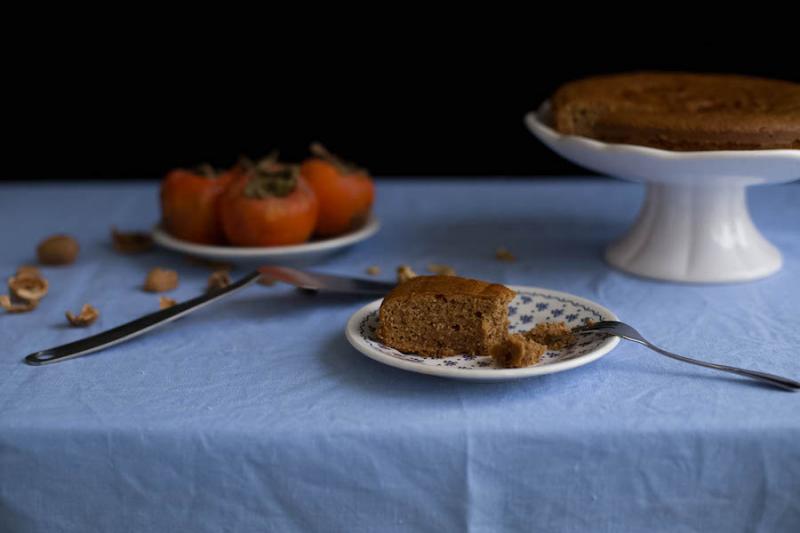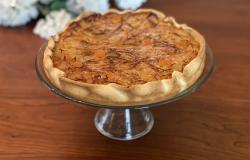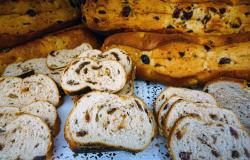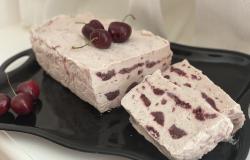Torta di cachi e noci (Persimmon and walnut cake)

Italians have generally taken a long time to adopt non-native fruits and vegetables to their cooking. Conservative to the core, vegetables we've come to regard as Italian icons, such as eggplants (originally from India) and New World tomatoes, were regarded with suspicion and were often left to languish as ornamental novelties in many a noble's garden. The Italian name for eggplant, melanzana, in fact, is generally held to derive from the term mela non sana (meaning 'crazy' or 'insane apple').
The Far East Asian native, diaspyros kaki, better known as the persimmon, is no exception. Despite making its first appearance in Florence’s Boboli Gardens in the 1500s, Italians did not catch on to the jammy, syrupy-sweet flavour of the stark, bare-branched tree's stunning orange baubles until the late nineteenth-early twentieth centuries. Only then, did cultivation - most notably in the regions of Campania, Sicily and Emilia-Romagna - really begin in earnest.
Cachi, the Italian word for persimmons, derives from the Japanese kaki. Two varieties are cultivated in the country's orchards – fuyus or non-astringent persimmons and hachiya or astrigent cachi. Fuyus are generally referred to as cachi mela, which literally means ‘persimmon apple’. Like apples, these persimmons can be eaten when firm and are often bitten into or served sliced in salads. Hachiyas, on the other hand, contain bitter tannins when crisp and leave a furry aftertaste if eaten too hastily. To avoid that unpleasant, puckering sensation on your lips, hachiyas should be left to blet and soften to a wobbly, jam-like state.
While I quite like crunchy fruit I can bite into, when it comes to persimmons, I must say I prefer the fragance of overripened hachiyas. These are just wonderful eaten as a dessert after a meal, with their skin as a bowl and a spoon to scoop and slurp on their syrupy pulp. Surprisingly enough though, they also lend themselves well to baking. Here's an easy recipe for a spongy yet moist cake should you ever find yourself with a glut of these almost impossibly beautiful bletted fruits.
Ingredients (for a 26 cm diameter cake tin)









